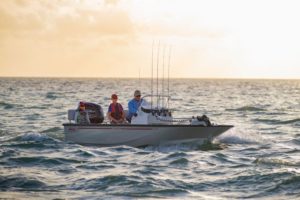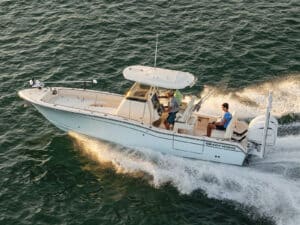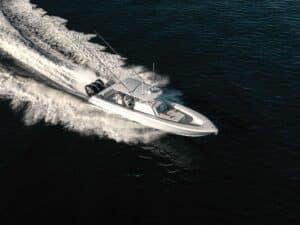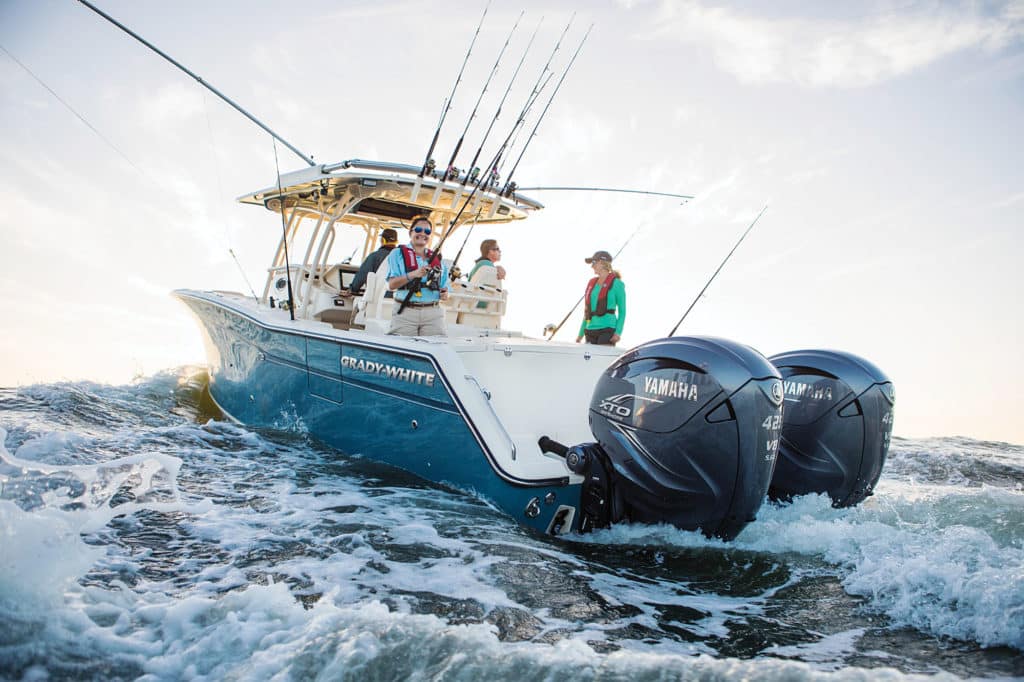
It’s a powerful outboard, the new Yamaha XTO Offshore®, and it’s brought big change—to sport-fishers, center-console lovers and even to water taxis.
Built from skeg to cowl to team-power yacht-class offshore boats, this 425 hp, 5.6L V-8 has won fans in single and twin applications on smaller craft with big offshore ideas too.
What’s New?
Yamaha calls its newcomer an “integrated power system,” and backs the claim with many innovations and industry firsts.
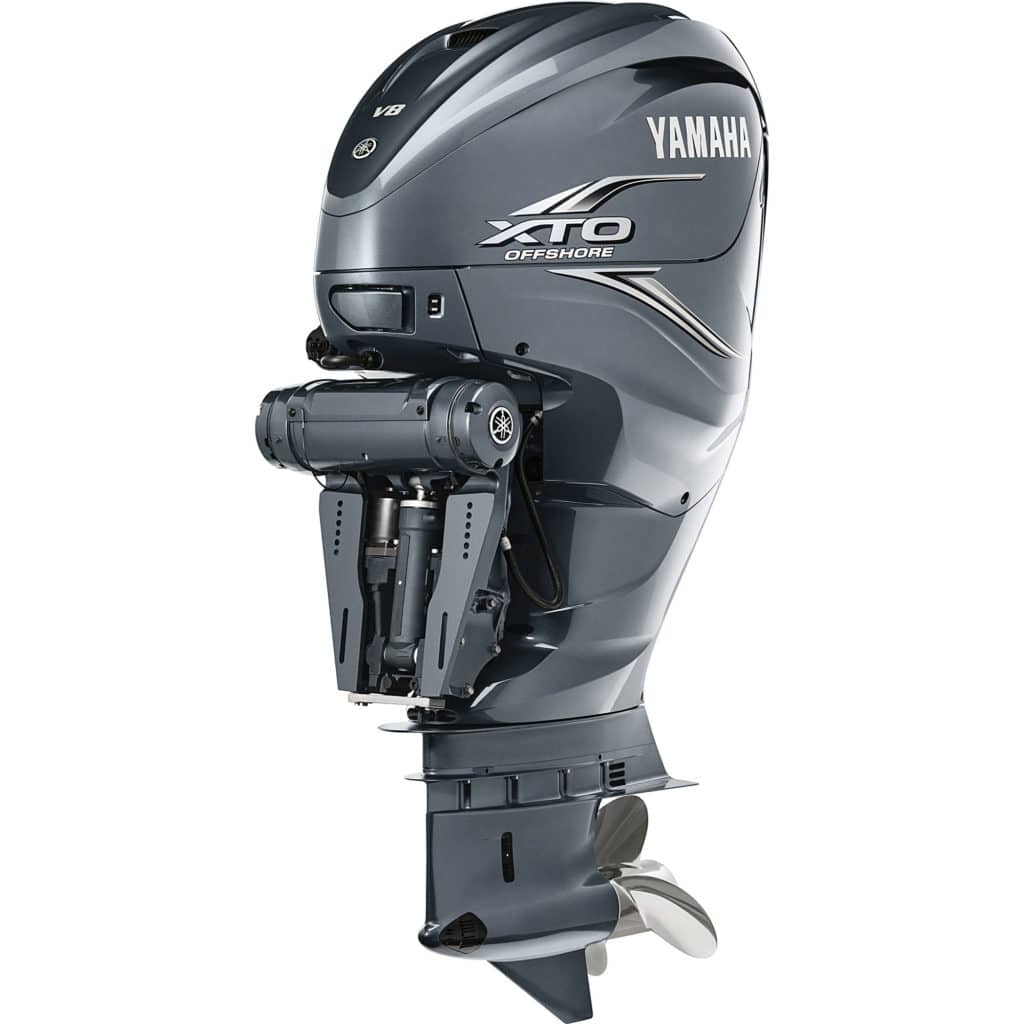
The XTO Offshore’s electric steering system eliminates cables and -hydraulics. Internally housed electrical motors directly move the outboard, resulting in -instant response, simpler rigging and fewer -components.
In the XTO Offshore —boating’s first direct-injection four-stroke—two fuel pumps spray atomized fuel directly into combustion chambers at up to 2,900 psi, maximizing combustion and efficiency.
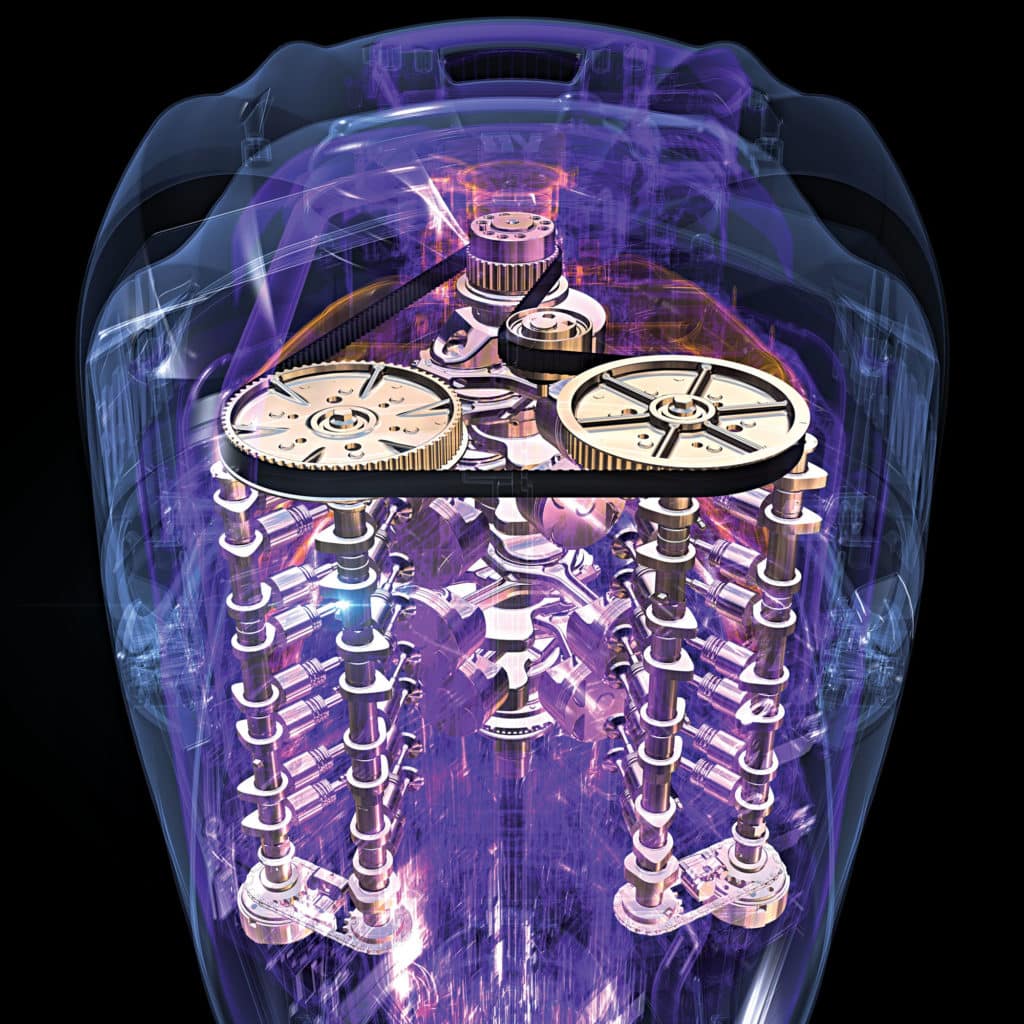
The XTO exhausts above the cavitation plate until the motor reaches about 2,500 rpm, after which exhaust passes through the propeller hub. This thrust-enhancing exhaust routing provides maximum power and control in reverse instead of asking props to bite into already frothy water. The reverse thrust increase—about 300 percent more than with the F350—helps plenty when maneuvering dockside or backing down on a big fish. Exhaust pressure controls the flow; there’s no mechanism to fail.
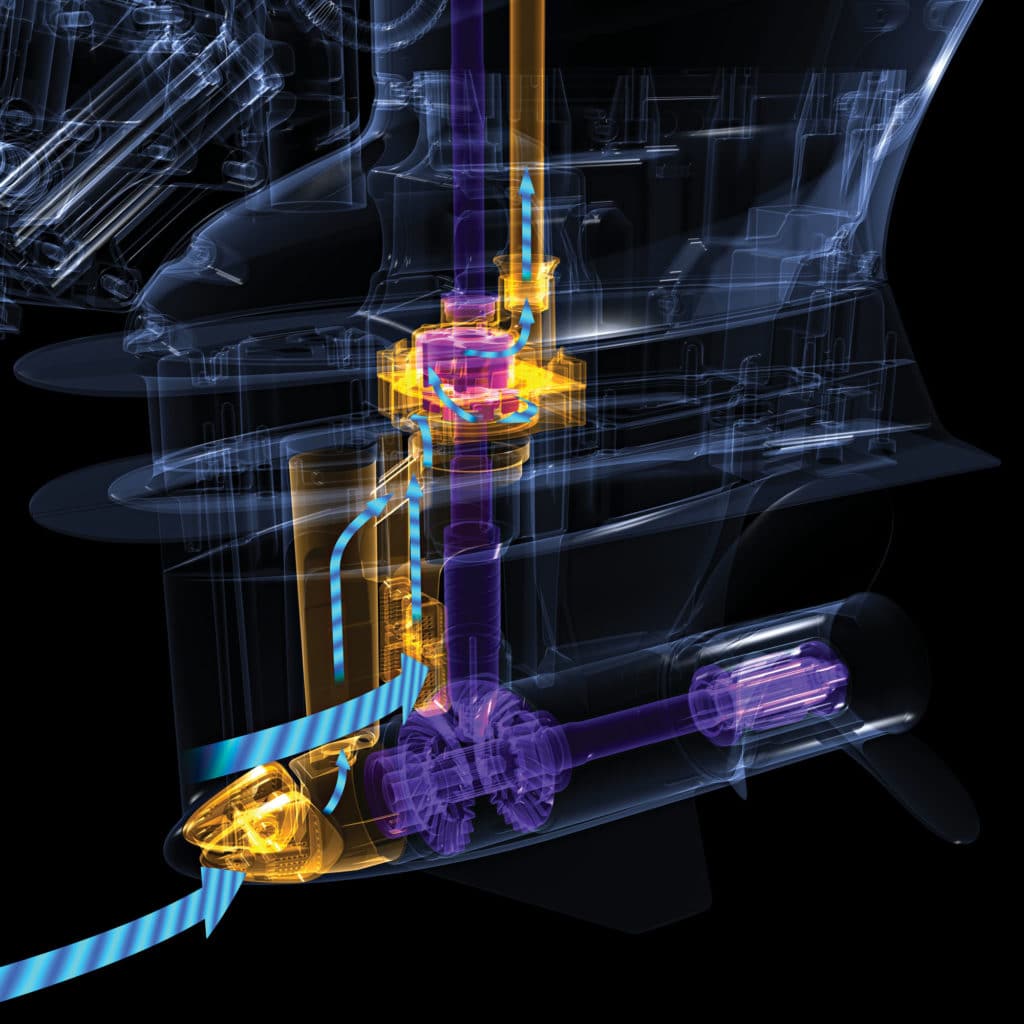
Plasma-fused sleeveless cylinders—another Yamaha Outboard innovation—are lighter, more compact and 60 percent harder than steel, making it possible to produce bigger-bore power within the same-size powerhead, all while reducing friction and weight. Cam shafts and lifters boast new technology too.
A high-output alternator cranks out 90 amps gross and up to 72 amps net charging at around 1,500 rpm.
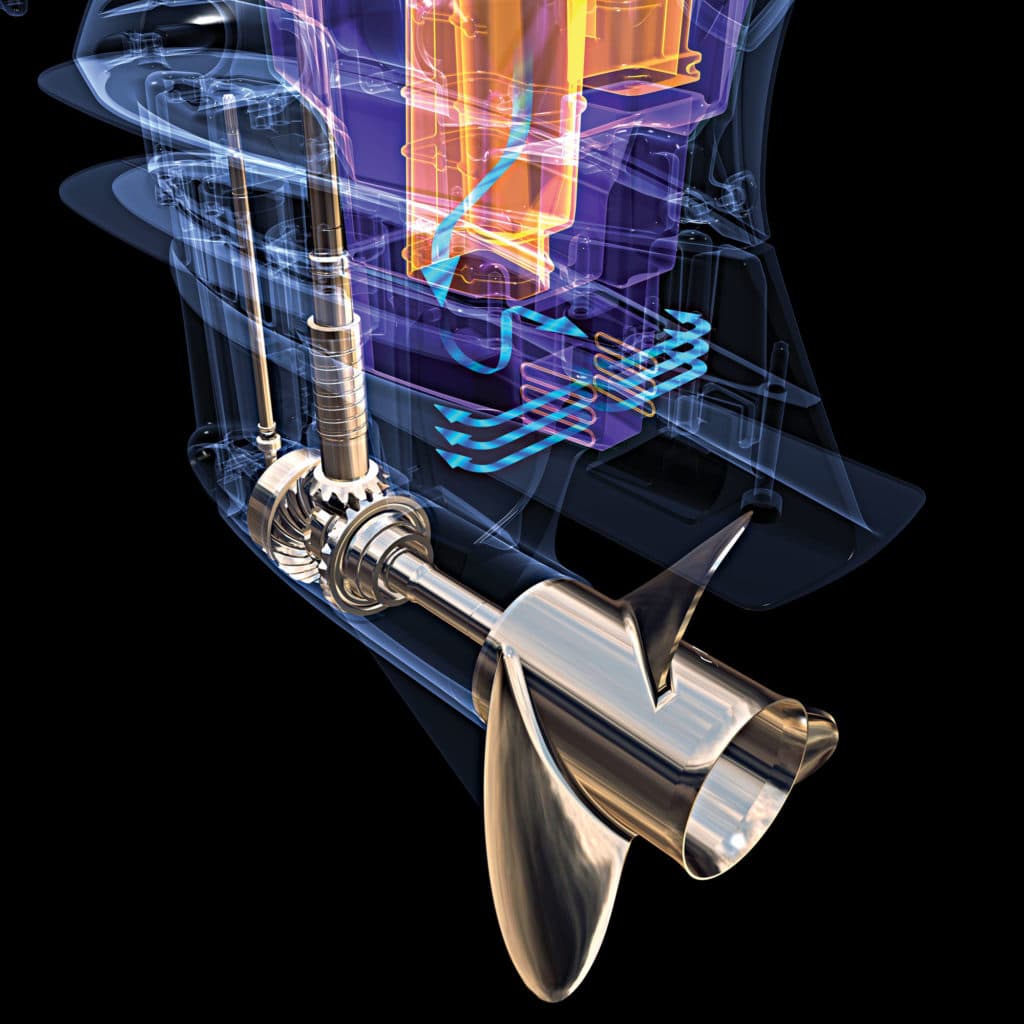
Power tilt lifts the motor clear off the water on most boats, making for less maintenance, especially on boats in salt water. There’s less worry trailering too.
Come maintenance time, no need to haul out the boat to change the gearcase lube either. Your technician withdraws the old oil with a vacuum line at the power head, and pumps fresh back in.
A Winning Numbers Game
Yamaha envisioned the XTO Offshore as a team player on big, multiengine boats (50-footers and up.) Boaters have found that with this big-displacement powerhouse, they can opt for fewer outboards—three outboards instead of four, for example, or two instead three.
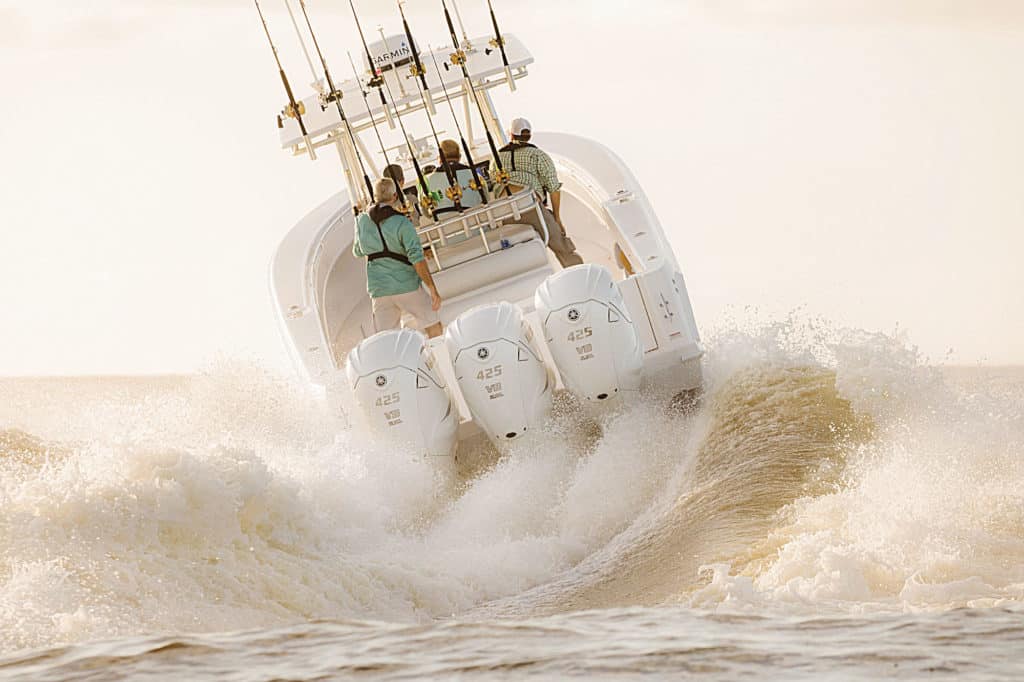
One triple-powered Contender® 39, with its center motor off and fully trimmed-up still hit nearly 65 mph. Boaters to whom speed is important might still want three XTOs, but those for whom a mile-a-minute is plenty will be happy with a two-pack.
The XTO Offshore has surprised many folks by emerging as a great single solution for 25- and 26-foot boats.
Fish On!
When the biggest fish is on the line, captains must sometimes concede to the rampager and back down to shorten the distance between fish and angler. When that happens, the reverse-thrust increase provided by the thrust-exhaust-exchange feature of the XTO is a decided advantage, in both power and -steerageway.
“Trim up a little in reverse, and it actually lifts the transom out of the water instead of pulling it down,” said legendary Florida captain Rick Murphy. ”You can make the boat actually dance in reverse!”
The exhaust system pays off in a different way too, believes Capt. Murphy, producing smoother water in which to offer baits and lures. Trolling, you’re not sending exhaust bubbling through the prop hub, so you’re giving fish a better look at your offerings.
With Yamaha’s new design, he says, “white water is 50 to 60 percent less. I can see it; I’ve been shooting underwater video for 30 years.”
Murphy, by the way, is having a new 35-foot fishing boat built, with twins instead of triples—twin Yamaha XTOs.
“Taxi!”
The Charleston Water Taxi provides Charleston’s residents and visitors a novel way to view historic sights and attractions, salute aircraft carrier USS Yorktown, or simply view pelicans and dolphins.
Its twin-outboard 40-foot Corinthian catamarans run all day, every day, and for more than 10 years, those outboards have been Yamahas—a surprisingly low number of Yamahas!
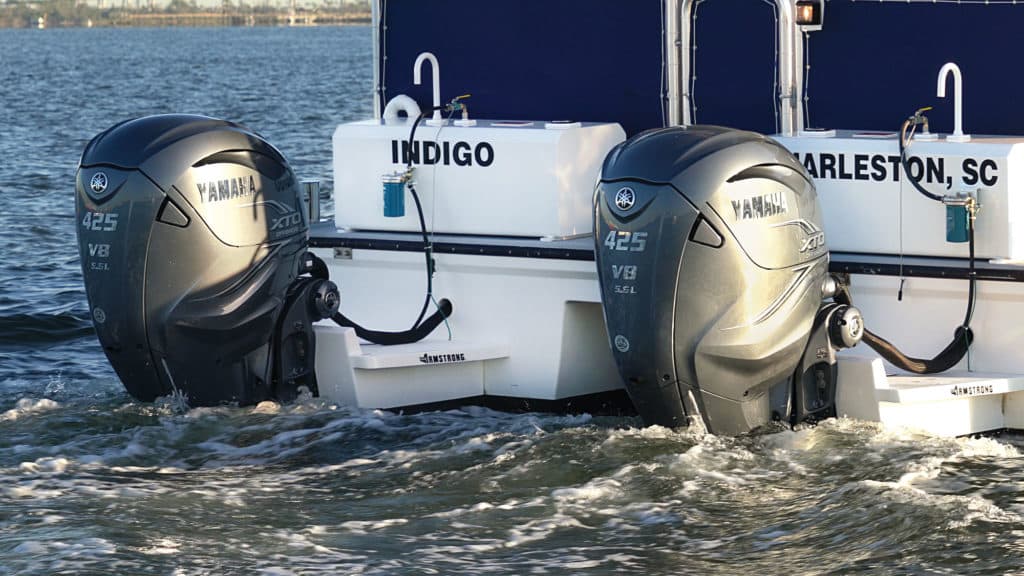
The original taxi is on its third set of F150s, having upgraded them, proactively, at 6,800 and 8,700 hours* of service. A third pair is nearing 4,000 hours*.
The second taxi has its original pair of F200s, five years in.
A backup boat, a 27-foot Carolina Skiff, is powered by one of those first 150s, nudging a cumulative 10,000 hours*. (Yamaha bought back the other original motor.)
When the company commissioned its new 50-footer, it spec’d it with Yamaha XTO Offshores. They’ll provide the ferry service with Yamaha power, durability and dependability, along with the new, easy maintenance of its in-water gear lube-change feature along with the docking and traffic-handling agility provided by its full reverse thrust.
*Results are based on commercial use, and may vary for traditional retail consumer use.

